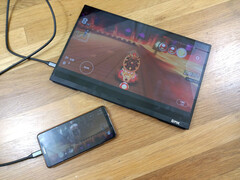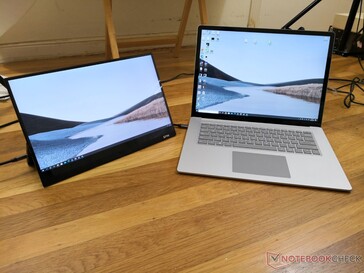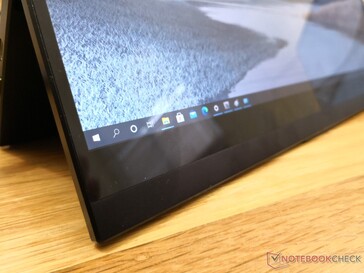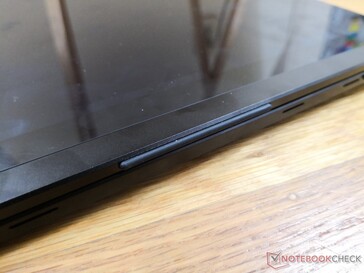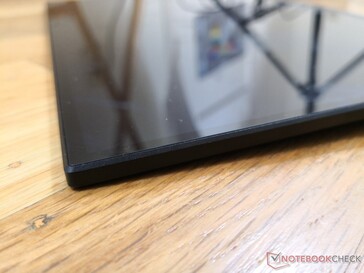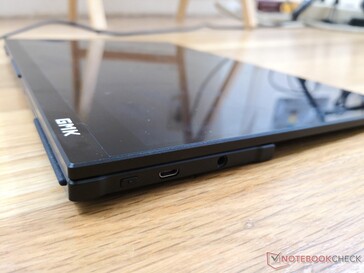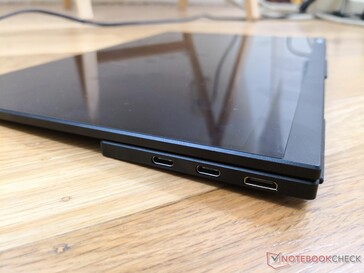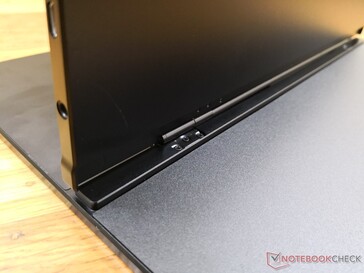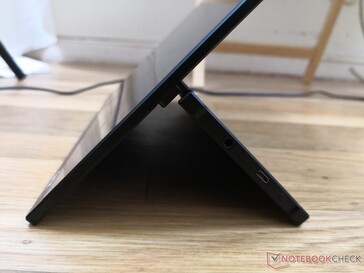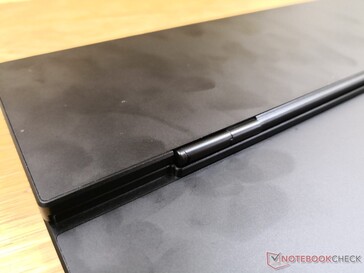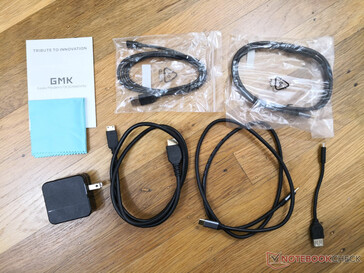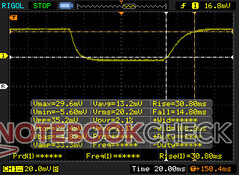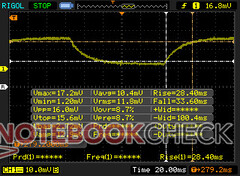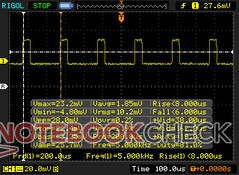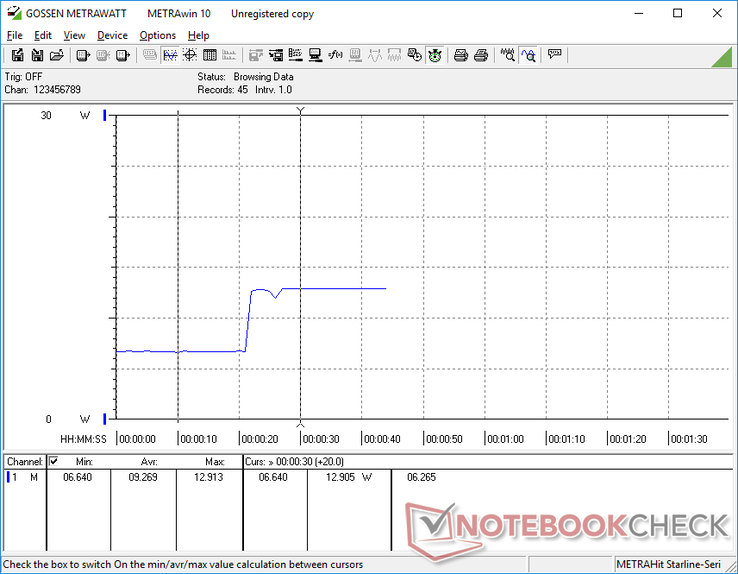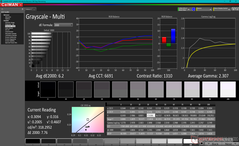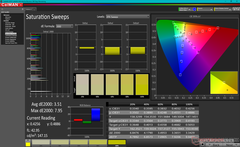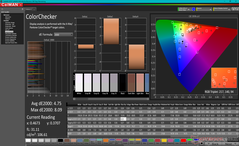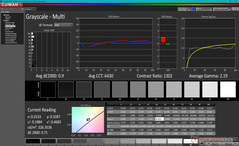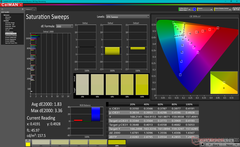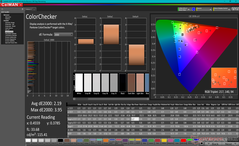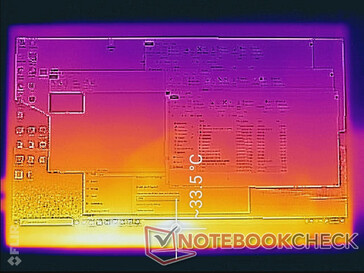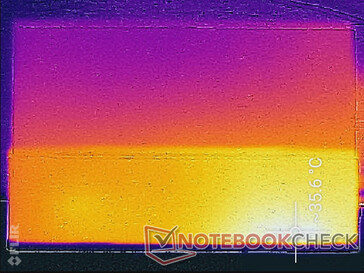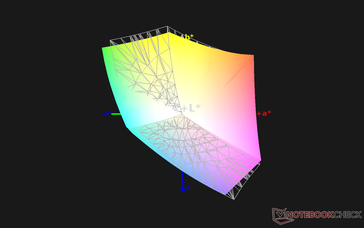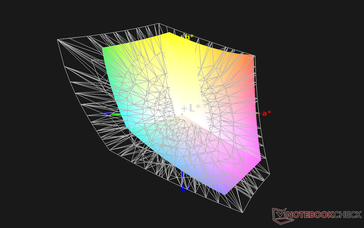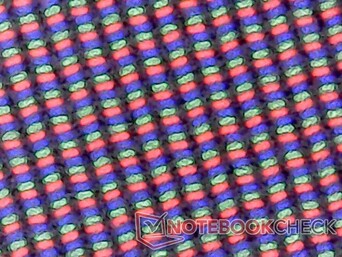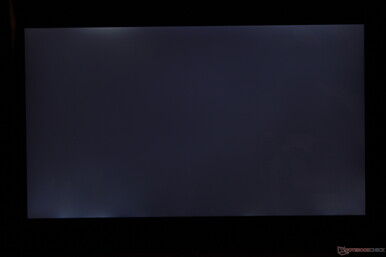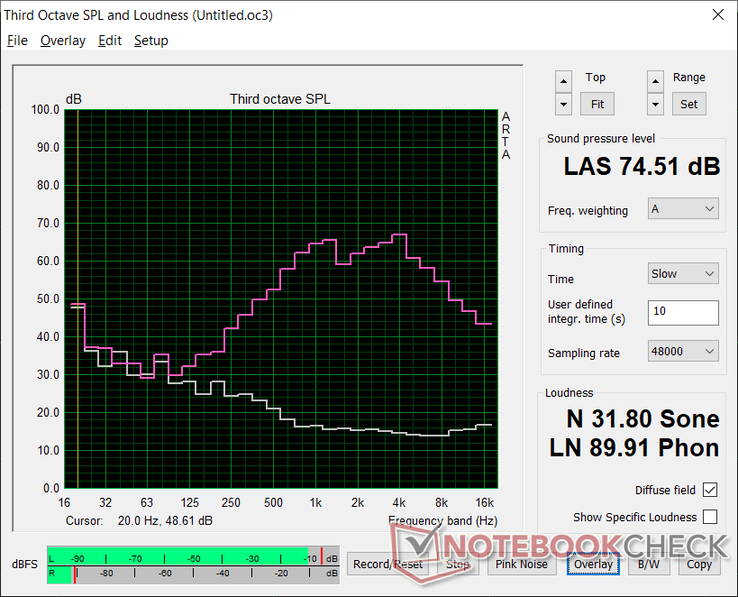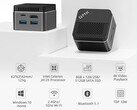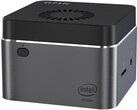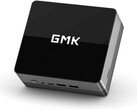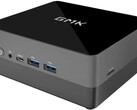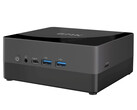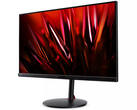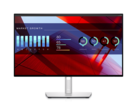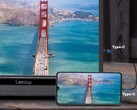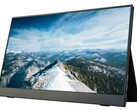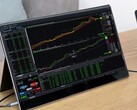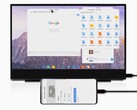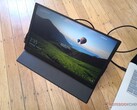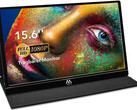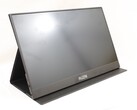We've checked out a handful of portable monitors in the past ranging from 15.6-inches up to 17.3-inches in screen size. Such models, however, walk a fine line between what can be considered truly portable. The 14-inch GMK KD1 is the smallest monitor we've seen thus far to be much easier to carry around. GMK has sent us a sample for our impressions and measurements as shown below.
The high price of the monitor reflects the high quality chassis and display. Unlike the Auzai and other cheap 15.6-inch solutions, the metal skeleton and glass front reinforce the display and add rigidity. The integrated hinges are better than expected as well since they don't slip as easily.
Our least favorite aspect of the monitor is that the packaging includes no carrying case. For $300, at least a solid screen protector would have been nice. GMK offers a carrying sleeve separately for $32 USD, but the manufacturer will sometimes include it for free during sales through its official website here. The mini-HDMI port can also be irksome because most people have multiple full-size HDMI to HDMI cables whereas mini-HDMI cables are more uncommon.
The GMK KD1 is now shipping on Amazon. Though it's pricier than some alternatives from Auzai or Vissles, the KD1 is one of the better portable monitors we've seen especially after calibration.
| Pros | Cons |
|---|---|
| + Small, portable, and relatively sturdy + Rigid hinges + Full sRGB coverage and native 4K resolution IPS touchscreen + FreeSync compatible + Aluminum body and glass front + Can operate with no dedicated power cable + Easy to use touch OSD + Only 5 mm thick at its thinnest point | - Does not come with a carrying case or screen protector - Mini-HDMI port instead of full-size HDMI - Colors and grayscale are not well-calibrated out of the box - Slow black-white and gray-gray response times - PWM present on almost all brightness levels - Integrated 2x 2 W speakers are weaker than laptop speakers - Fingerprint magnet - Slight backlight bleeding - Pricey |
| |||||||||||||||||||||||||
Brightness Distribution: 82 %
Center on Battery: 325.3 cd/m²
Contrast: 1084:1 (Black: 0.3 cd/m²)
ΔE Color 4.75 | 0.5-29.43 Ø5, calibrated: 2.19
ΔE Greyscale 6.2 | 0.57-98 Ø5.3
94.6% sRGB (Argyll 1.6.3 3D)
65.4% AdobeRGB 1998 (Argyll 1.6.3 3D)
71.1% AdobeRGB 1998 (Argyll 2.2.0 3D)
94.4% sRGB (Argyll 2.2.0 3D)
69.6% Display P3 (Argyll 2.2.0 3D)
Gamma: 2.31
| GMK KD1 Portable Monitor 14.00, 3840x2160 | Vissles Monitor 15.6 15.60, 1920x1080 | AirTab Portable Monitor 15.6-inch 15.60, 1920x1080 | C-Force CF011S RTK2A3B, , 15.60, 1920x1080 | MEMTEQ Type-C Portable Monitor Z1 15.60, 1920x1080 | Auzai ME16Z01 Portable Monitor 15.60, 1920x1080 | |
|---|---|---|---|---|---|---|
| Display | -31% | -39% | -39% | -37% | -28% | |
| Display P3 Coverage | 69.6 | 47.33 -32% | 40.72 -41% | 41.08 -41% | 42.03 -40% | 48.53 -30% |
| sRGB Coverage | 94.4 | 66.4 -30% | 61 -35% | 60.3 -36% | 63.2 -33% | 72 -24% |
| AdobeRGB 1998 Coverage | 71.1 | 48.6 -32% | 42.11 -41% | 42.44 -40% | 43.44 -39% | 50.2 -29% |
| Response Times | -8% | -2% | -12% | -19% | -5% | |
| Response Time Grey 50% / Grey 80% * | 62 ? | 41.2 ? 34% | 36 ? 42% | 41.2 ? 34% | 52 ? 16% | 38.8 ? 37% |
| Response Time Black / White * | 45.6 ? | 35.2 ? 23% | 31.2 ? 32% | 40.8 ? 11% | 42.5 ? 7% | 25.2 ? 45% |
| PWM Frequency | 5000 ? | 1000 ? -80% | 1042 ? -79% | 1000 ? -80% | 1000 ? -80% | 201.6 ? -96% |
| Screen | -43% | -31% | -45% | -30% | -68% | |
| Brightness middle | 325.3 | 248.1 -24% | 206.5 -37% | 205 -37% | 198 -39% | 300.7 -8% |
| Brightness | 316 | 237 -25% | 198 -37% | 193 -39% | 198 -37% | 267 -16% |
| Brightness Distribution | 82 | 91 11% | 88 7% | 88 7% | 85 4% | 77 -6% |
| Black Level * | 0.3 | 0.28 7% | 0.33 -10% | 0.25 17% | 0.2 33% | 0.66 -120% |
| Contrast | 1084 | 886 -18% | 626 -42% | 820 -24% | 990 -9% | 456 -58% |
| Colorchecker dE 2000 * | 4.75 | 6.85 -44% | 4.25 11% | 8.01 -69% | 6.9 -45% | 10.26 -116% |
| Colorchecker dE 2000 max. * | 8.09 | 20.8 -157% | 18.11 -124% | 19.93 -146% | 15.9 -97% | 22.93 -183% |
| Colorchecker dE 2000 calibrated * | 2.19 | 5.69 -160% | 4.08 -86% | 4.3 -96% | 4 -83% | 5.05 -131% |
| Greyscale dE 2000 * | 6.2 | 5.8 6% | 3.1 50% | 8.3 -34% | 5.5 11% | 9.5 -53% |
| Gamma | 2.31 95% | 2.34 94% | 2.31 95% | 2.1 105% | 1.59 138% | 1.51 146% |
| CCT | 6691 97% | 6402 102% | 6994 93% | 6106 106% | 7310 89% | 8200 79% |
| Color Space (Percent of AdobeRGB 1998) | 65.4 | 42.8 -35% | 38.7 -41% | 38.7 -41% | 40 -39% | 45.8 -30% |
| Color Space (Percent of sRGB) | 94.6 | 65.8 -30% | 60.8 -36% | 59.8 -37% | 62.9 -34% | 71.5 -24% |
| Total Average (Program / Settings) | -27% /
-34% | -24% /
-27% | -32% /
-38% | -29% /
-30% | -34% /
-50% |
* ... smaller is better
The monitor consumes about 6.7 W when on the minimum brightness setting up to about 12.9 W when brightness is turned to its maximum. Note that this will be much higher if the monitor is also being used to recharge the laptop or smartphone that it is connected to.
X-Rite colorimeter measurements show a poorly calibrated display with an overly warm color temperature out of the box. Calibrating the panel ourselves would improve grayscale significantly from an average DeltaE of 6.2 down to just 0.9. We recommend applying our calibrated ICM profile above.
GMK advertises full sRGB coverage which our independent measurements have proven. Nonetheless, some backlight bleeding is present on our test unit as shown by our picture below. It's fortunately not noticeable until you start watching movies with black borders.


 Deutsch
Deutsch English
English Español
Español Français
Français Italiano
Italiano Nederlands
Nederlands Polski
Polski Português
Português Русский
Русский Türkçe
Türkçe Svenska
Svenska Chinese
Chinese Magyar
Magyar